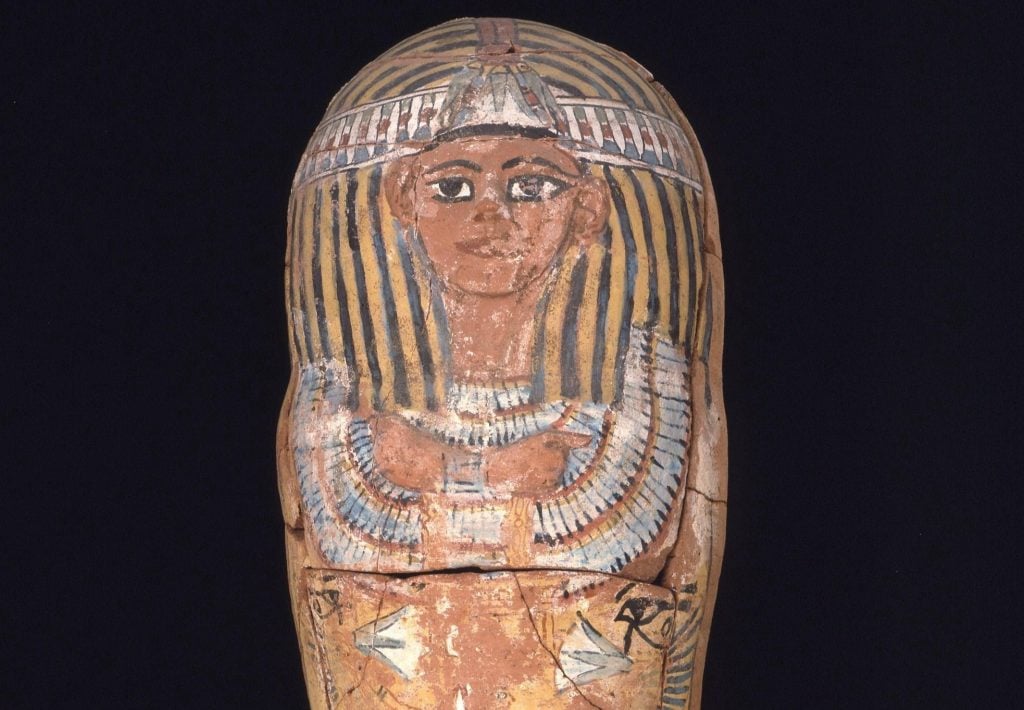Museums & Institutions
MFA Boston Returns a Stolen Egyptian Coffin to Sweden
The coffin was taken from the collection of a museum in Uppsala.

The coffin was taken from the collection of a museum in Uppsala.

Brian Boucher

A coffin that was used to bury an Egyptian child named Paneferneb between about 1295 and 1186 B.C.E., which has been in the hands of the Museum of Fine Arts Boston since 1985, has been returned to a museum in Sweden after MFA staff discovered that the piece was stolen from the Gustavianum, Uppsala University Museum, around 1970.
The British School of Archaeology in Egypt unearthed the coffin in 1920 at Gurob, Egypt. Overseeing the dig was Flinders Petrie, who, with his wife, Hilda Urlin, excavated numerous important archaeological sites. Among his most significant finds was the Merneptah Stele in 1896; he also discovered the Proto-Sinaitic script, the ancestor of almost all alphabetic scripts, in 1905.
At the time, the Egyptian government had put in place a system of “partage,” or a division of finds, whereby it distributed the results of archaeological excavations between Egypt and the foreign parties sponsoring the digs. As part of that system, the coffin went in 1922 to Uppsala University’s Victoria Museum of Egyptian Antiquities, as it was then called. But the sarcophagus, made of pottery and measuring about 43 inches in length, went missing by at least 1970.
The coffin resurfaced in 1985, when the MFA bought it from one Olof S. Liden, who claimed to represent the artist Eric Ståhl. He presented a forged letter in which Ståhl supposedly recounted having excavated the coffin at Amada, Egypt, in 1937. Liden also presented falsified documents authenticating the coffin, purportedly from experts in Sweden. Ståhl, noted the museum in its announcement of the return of the coffin, “is not known to have participated in any excavation in Egypt.”
Curators at the MFA first smelled a rat upon finding a photograph of the coffin in the process of excavation in the 2008 book Unseen Images: Archive Photographs in the Petrie Museum, which noted that it went to Uppsala. When they noted the discrepancy, they contacted the staff at the Gustavianum, and the process of returning the piece began; the museum’s website stated that it was deaccessioned in October.
“It has been wonderful working with our colleagues in Uppsala on this matter, and it is always gratifying to see a work of art return to its rightful owner,” said Victoria Reed, senior curator of provenance at the MFA. “In this case, we were fortunate to have an excavation photograph showing where and when the coffin was found, so that we could begin to correct the record. Anytime we deaccession and restitute a work of art from the museum, it serves as a good reminder that we need to exercise as much diligence as possible as we build the collection.”
The MFA Boston’s department of the art of ancient Egypt, Nubia, and the Near East includes some 65,000 artifacts, including sculpture, jewelry, coffins, mummies, mosaics, and more, placing it among the world’s largest collections of such items, along with institutions like the Grand Egyptian Museum in Giza and London’s British Museum. The Gustavianum houses a collection of about 5,000 examples.